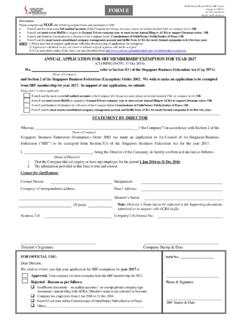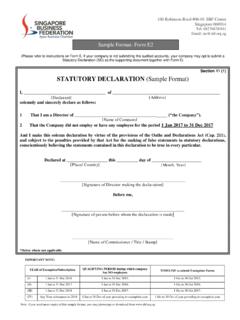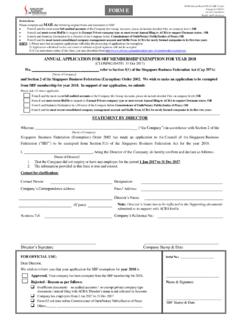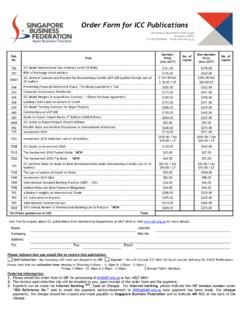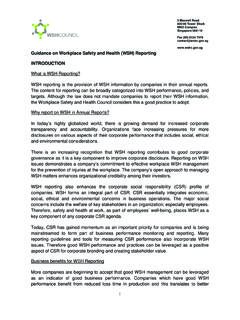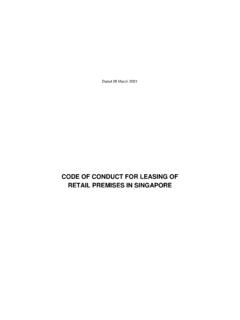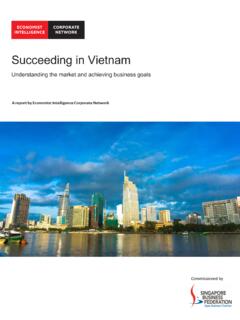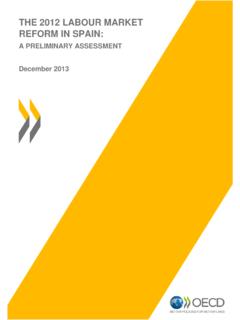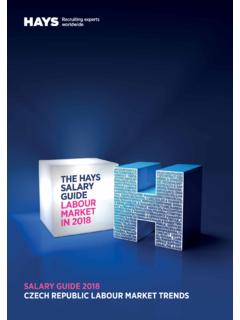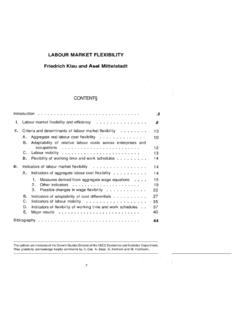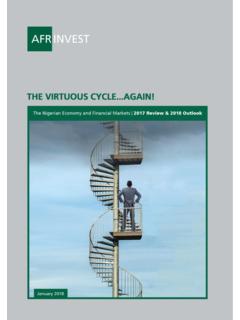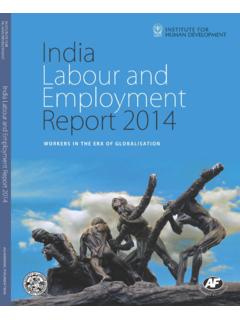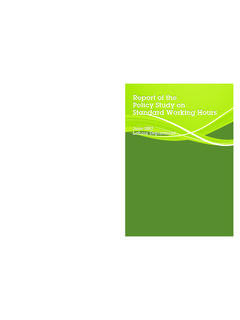Transcription of NATIONAL WAGES COUNCIL (NWC) 2017/2018 GUIDELINES …
1 NATIONAL WAGES COUNCIL (NWC) 2017 / 2018 GUIDELINES economic performance and labour market in 2016 1. In 2016, the Singapore economy grew by , similar to the growth in 2015. Total employment (excluding Foreign Domestic Workers) grew by 8,600 in 2016, lower than 23,300 in 2015. The overall unemployment rate rose slightly from in 2015 to in 2016, while the resident unemployment rate increased from in 2015 to in 2016. Redundancies rose to 19,170 in 2016, continuing an upward trend since 2010, but remained lower than the recessionary high in 2009. 2. The Consumer Price Index (CPI) fell by in 2016, similar to the decline in 2015.
2 CPI less imputed rentals on owner-occupied accommodation (OOA), which relates more directly to the actual cash spending of households, edged up by in 2016, slightly higher than the increase in 2015. 3. Overall labour productivity as measured by real value-added per worker rose by in 2016, reversing the decline of in 4. Total nominal WAGES in the private sector, including bonuses and employer Central Provident Fund (CPF) contributions, grew by in 2016, lower than the increase of in 2015. This was due to a lower basic wage increase of in 2016 (compared to in 2015). Bonuses remained largely unchanged at months of basic WAGES in 2016 (compared to months in 2015).
3 5. Accounting for the CPI inflation in 2016, real basic WAGES continued to grow but at a slower pace of , compared to in 2015. Real total WAGES including employer CPF contributions rose by in 2016, compared to in 2015. Outlook for 2017 6. Global growth is projected to improve in 2017 , although uncertainties and downside risks remain. In particular, there are signs of a rise in anti-globalisation sentiments, which could have an adverse impact on global trade if they lead to increased protectionism. In Singapore, the economic outlook remains varied across sectors. Outward-oriented sectors such as Electronics and Transportation & Storage, as well as domestically-oriented sectors such as Health & Social Services, are likely to support growth in 2017 .
4 On the other hand, sectors such as Construction, Marine & Offshore Engineering, Retail and Food Services are 1 MTI economic Survey of Singapore 2016, released on 17 February 2017 . likely to continue to face headwinds. Against this macroeconomic backdrop, the Singapore economy is expected to grow by to in 2017 , with growth likely to come in higher than barring the materialisation of downside risks. The Monetary Authority of Singapore (MAS) forecasts2 the 2017 CPI inflation to be between and 7. Likewise, the labour market outlook is expected to remain uneven across sectors.
5 Hiring in some sectors will remain cautious, but opportunities will continue to be available in others such as Health & Social Services, Information & Communications, Finance & Insurance, and certain segments of NWC Wage GUIDELINES for 2017 / 2018 Deepen Skills and Transform Jobs to Enhance Productivity and Stay Future-Ready 8. The NWC welcomes the recommendations made by the Committee on the Future Economy (CFE), particularly to embrace innovation, build stronger digital capabilities, and deepen international connections. With total workforce growth expected to be significantly lower (around 25,000 to 40,000 per annum) than in the earlier part of this decade, it is crucial for businesses to redesign jobs and transform towards higher productivity and innovation, so as to be manpower-lean and competitive.
6 This will ensure that real wage increases are in line with productivity growth over the long term. 9. The NWC calls on tripartite partners to press on with implementing the CFE recommendations in each sector through the Industry Transformation Maps (ITMs), to ensure that our businesses capture growth opportunities that provide good jobs and good WAGES for Singaporeans. The Government s Transform and Grow initiative will provide timely support. The NWC encourages employers to tap on the support available under this initiative to create better quality jobs for Singaporeans. 10. As the economy undergoes transition and businesses restructure, the Government has further enhanced the Adapt and Grow package to help affected workers to reskill and take on new jobs in the future economy.
7 The NWC welcomes these initiatives, which will help to overcome missed matches and mismatches in the labour market . Both jobseekers and employers are encouraged to make full use of Government support to secure good job matches. The NWC 2 MAS-MTI Consumer Price Developments in March 2017 , released on 24 April 2017 . 3 MOM Press Release on labour market Advance Release 1Q 2017 , released on 28 April 2017 . also urges all workers to tap on SkillsFuture initiatives to continually refresh their skills to take advantage of opportunities in the future economy. 11. Taking into consideration the uneven business conditions, and the ongoing transition of the economy, the NWC reaffirms the principle that wage increases will need to be sustainable and fair: built-in wage increases should be given in line with firms business prospects, while variable payments should reflect firms performance and workers contributions.
8 Hence, the NWC recommends that: a) employers which have done well and have good business prospects should reward their workers with built-in wage increases, and variable payments commensurate with the firms performance ; b) employers which have done well but face uncertain prospects may exercise moderation in built-in wage increases, but should reward workers with variable payments commensurate with the firms performance ; and c) employers which have not done well and face uncertain prospects may exercise wage restraint, with management leading by example, and should make greater efforts to transform and grow. 12. In doing so, the NWC encourages employers to share productivity gains fairly with workers and enhance flexibility in their wage structure to ensure competitiveness.
9 Wage Recommendations for Low-Wage Workers 13. The NWC notes that the ongoing efforts by tripartite partners to raise the skills and incomes of low-wage workers, and support for the five rounds of NWC quantitative wage recommendations for low-wage workers, have made a positive impact. Since the quantitative GUIDELINES were introduced in 2012, the proportion of full-time resident employees earning a basic monthly wage of up to $1,000 is estimated to have decreased from in 2011 to in 2014, and to in 2016. 4 The judicious increase in the wage threshold in 2015 to $1,100 has helped to maintain momentum of the effort. After the increase, the proportion of full-time resident employees earning a basic monthly wage of up to $1,100 is estimated to have decreased from in 2014 to in 2016.
10 Therefore, the NWC believes there is merit to continue to provide quantitative GUIDELINES for low-wage workers, and to further raise the basic wage threshold from $1,100 to $1,200. 4 Source: Comprehensive labour Force Survey and Occupational Wage Survey. 14. Last year, instead of a fixed absolute quantum of wage increase, the NWC recommended a built-in wage increase ranging between $50 and $65 for workers earning a basic monthly wage of up to $1,100. The greater flexibility provided by the range has increased the adoption rate of the quantitative GUIDELINES from 18% in 2015 to 21% in With the labour market outlook and business conditions remaining uneven across sectors, the NWC sees merit in continuing to set a range for the recommended wage increases.
